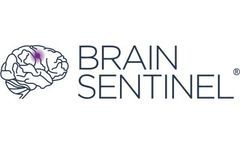Seizure Detection Articles & Analysis
9 news found
Electroencephalography (EEG) devices are incredibly helpful in diagnosing and monitoring certain brain disorders, such as epilepsy and strokes. However, they are not particularly user-friendly or convenient, with specialized technicians performing time consuming procedures, such as skin preparation, to get patients ready to undergo the procedure. A combination of messy gels and wires also makes ...
More than 250,000 people are living with epilepsy in Australia, of which 1 in 7 are having difficult-to-notice absence seizures. Such seizures are different from tonic-clonic (convulsive) seizures, and are typically shorter in length, with a brief loss of consciousness. ...
Empatica was chosen because of its track record and success in creating the first smart watch used in neurology to detect seizures, the Embrace2, which has received FDA clearance for both its hardware sensors and its software alerting algorithm. ...
Belgian health tech startup epihunter NV is awarded a $200,000 grant from Epilepsy Foundation to further validate and market their CE labelled epileptic seizure detection algorithm. “The objective seizure data collected by epihunter can help clinicians make more informed treatment decisions,” says Dr Alexander Rotenberg, neurologist ...
Belgian startup, epihunter, introduces automated video functionality to their CE-marked seizure detection app - a breakthrough for children and adults with epilepsy, their families and doctors. “Including video in epileptic seizure detection has the potential to change the way neurologists and epileptologists assess and ...
“Including video in epileptic seizure detection has the potential to change the way neurologists and epileptologists assess and document seizure frequency and the effect of therapy,” says Dr Sándor Beniczky, Head of Clinical Neurophysiology at the Danish Epilepsy Centre. It is estimated that 1 in 100 people have epilepsy, and ...
Knowing the seizure type and classification of seizure events is important to the physician’s ability to make appropriate treatment plan changes. In most cases, the clinician relies on seizure diaries containing eyewitness accounts of events to determine seizure type and classification. ...
Additionally, the System will alarm to alert caregivers of sEMG signals that may be associated with generalized tonic-clonic (GTC) seizures, the most dangerous seizure type. In a clinically validated, published study, the SPEAC System’s GTC seizure detection algorithm demonstrated equivalent sensitivity with the gold ...
“There is a great need for better ways to get help to people suffering these seizures in the home setting as quickly as possible.” In January 2018, a prospective study on the SeizureLink detection algorithm was published in the journal, Neurology, by Dr. ...




